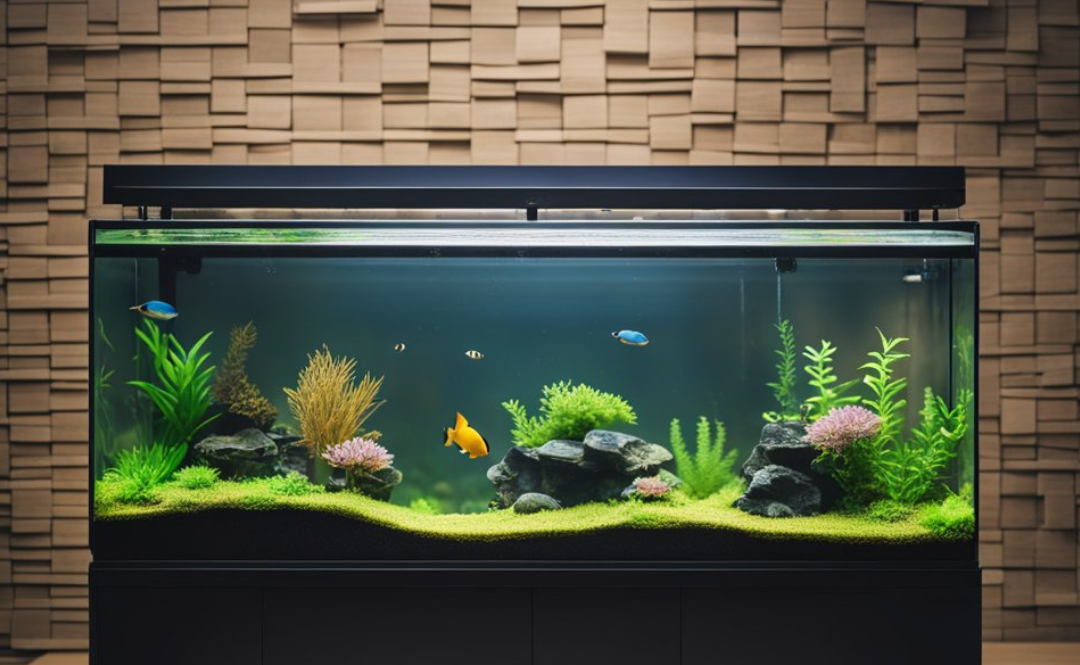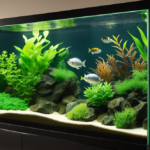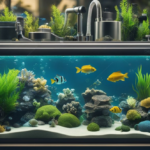A Low Maintenance Fish Tank is something you need if you are a beginner. Maintaining an aquarium can be a rewarding experience, but it can also be time-consuming and expensive. A low maintenance fish tank can be a great option for those who want to enjoy the benefits of owning an aquarium without the hassle of constant upkeep. In this article, we will discuss the key factors to consider when setting up a low-maintenance aquarium, including choosing the right fish and plants, setting up your tank, and maintaining your low-maintenance tank.
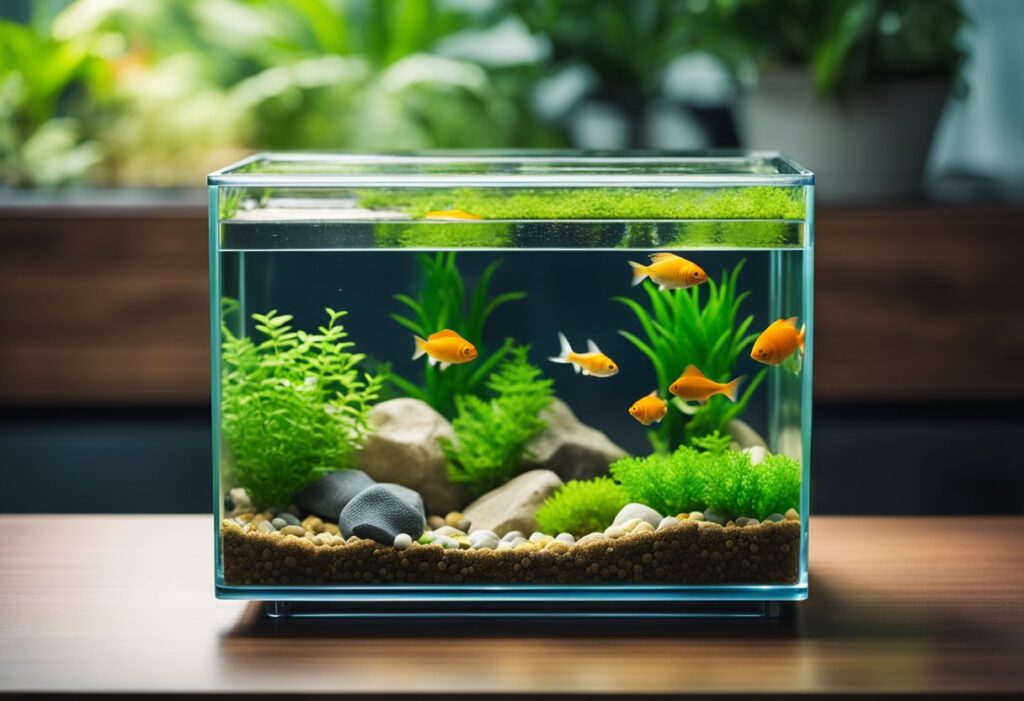
Choosing the right fish and plants is crucial when setting up a low-maintenance fish tank. Some fish species are hardier and more adaptable than others, making them better suited for a low-maintenance aquarium. Additionally, choosing plants that require minimal care and attention can help reduce the amount of maintenance required. We will discuss some of the best fish and plants for a low-maintenance aquarium in more detail later in the article.
Setting up your tank properly is also important when creating a low-maintenance aquarium. A well-designed aquarium will require less maintenance and be more sustainable over time. We will provide tips on how to set up your tank to maximize its efficiency and minimize the amount of maintenance required. Finally, we will discuss how to maintain your low-maintenance tank to keep it healthy and sustainable for years to come.
Key Takeaways
- Choosing the right fish and plants is crucial for a low-maintenance fish tank.
- Proper setup is essential to minimize maintenance and ensure sustainability.
- Regular maintenance is still required to keep a low-maintenance tank healthy.
Low Maintenance Fish Tanks
| Product Name | Rating | Price |
|---|---|---|
| 5 Gallon Betta Fish Tank Kit | 5.0 | $89.99 |
| Red Cherry Shrimp Juvenile | 5.0 | $39.99 |
| Aqueon 20 Gallon Starter Kit | 4.4 | $158.42 |
| Fluval SPEC Freshwater Kit, 2.6 Gallon | 4.4 | $89.99 |
| QANVEE Betta Nemo 2 Gallon Aquarium | 4.4 | $49.99 |
| Tetra ColorFusion 20 Gallon Kit | 4.4 | $147.22 |
| MarineLand Contour Kit with Rail Light | 4.4 | $64.36 |
| Aqueon LED MiniBow 2.5 Gallon Kit | 4.2 | Click to see |
| biOrb Halo 15 4-Gallon Aquarium | 4.0 | $143.99 |
| Hifybaty Negative Pressure Fish Tank | 4.2 | $23.99 |
| Koller Products AquaView 2-Gallon | 4.2 | $36.99 |
| GloFish Aquarium Kit | 4.2 | $88.49 |
| Tetra ColorFusion Starter Kit 3 Gallon | 4.2 | $79.99 |
| Back to the Roots Indoor Aquaponic Garden | 4.1 | $96.26 |
| Tetra Bubbling LED 1 Gallon Hexagon | 4.1 | $35.00 |
| hygger Horizon 8 Gallon LED Glass Kit | 4.1 | $135.00 |
*Please note that prices are subject to change and may vary depending on the seller, location, and any applicable discounts or promotions. The ratings provided are based on customer reviews and may also change over time. Amazon Affiliate Link.
Choosing the Right Fish and Plants

When it comes to setting up a low-maintenance fish tank, choosing the right fish and plants is crucial. Here are some tips to help you select the best options for your aquarium.
Best Fish for Low-Maintenance Tanks
There are several fish breeds that are known for being hardy and low-maintenance, making them perfect for a low-maintenance fish tank. Some of the best options include:
- Bettas: These beautiful fish are also known as Siamese fighting fish and are perfect for a single fish tank. They are hardy and can tolerate a wide range of water conditions.
- Guppies: These livebearers are great for a community tank and are known for their bright colors and playful personalities. They are also very hardy and can adapt to different water conditions.
- Neon Tetras: These peaceful schooling fish are perfect for a medium-sized aquarium and are known for their vibrant colors and ease of care.
- Cory Catfish: These small, non-aggressive fish are perfect for a community tank and are known for their hardiness and ease of care.
- Cherry Barbs: These peaceful fish are great for a community tank and are known for their bright red color and hardiness.
Suitable Plants for Easy Upkeep
Live plants can be a great addition to a low-maintenance fish tank, as they can help to keep the water clean and provide a natural environment for your aquatic pets. Here are some of the best options for easy upkeep:
- Java Fern: This hardy plant is perfect for beginners and can tolerate a wide range of water conditions.
- Anubias: This slow-growing plant is perfect for a low-maintenance tank and can be attached to rocks or driftwood.
- Amazon Sword: This plant is perfect for a medium-sized aquarium and can help to keep the water clean and clear.
- Java Moss: This plant is perfect for a community tank and can be used to create a natural-looking environment for your fish.
- Marimo Moss Ball: This low-maintenance plant is perfect for a small fish tank and can help to keep the water clean and clear.
By choosing the right fish and plants for your low-maintenance fish tank, you can create a beautiful and healthy environment for your aquatic pets with minimal effort.
Setting Up Your Tank
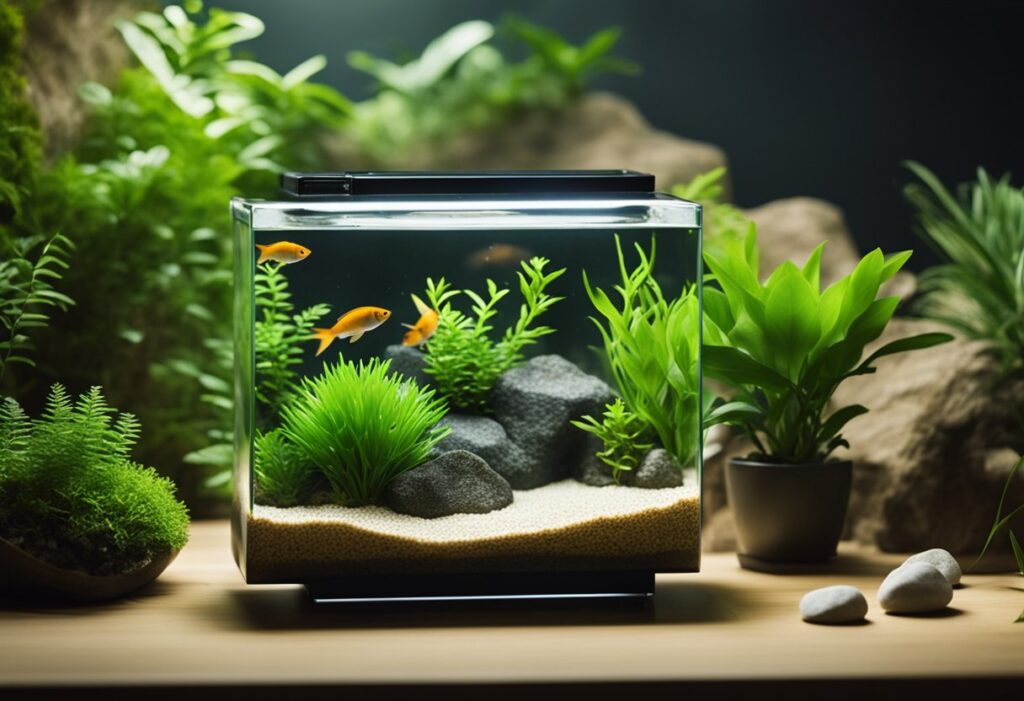
When it comes to setting up a low-maintenance fish tank, it is essential to choose the right size and equipment. In this section, we will discuss the key factors to consider when setting up your tank to ensure that it is easy to maintain.
Choosing the Right Tank Size
The size of your tank is an important factor to consider when setting up a low-maintenance fish tank. A 10-gallon tank is an excellent choice for beginners as it is easy to maintain and doesn’t require a lot of space. However, if you have more fish or want to add more plants, you may need a larger tank.
Essential Equipment for a Low-Maintenance Setup
To set up a low-maintenance fish tank, you will need the following equipment:
Filter
A filter is essential for maintaining water quality and keeping your tank clean. There are many types of filters available, including hang-on-back filters, canister filters, and sponge filters. We recommend using a filter that is designed for your tank size and provides adequate filtration.
Substrate
Substrate is the material that lines the bottom of your tank. It provides a surface for beneficial bacteria to grow, which helps maintain water quality. Gravel, sand, and ceramic media are all popular choices for substrate.
LED Light
A good LED light will help your plants grow and provide a natural day and night cycle for your fish. We recommend using a light that is designed for your tank size and provides adequate illumination.
Pump
A pump is necessary for creating water flow and oxygenation in your tank. A good pump will help maintain water quality and keep your fish healthy.
Heater
A heater is essential for maintaining a stable water temperature in your tank. We recommend using a heater that is designed for your tank size and provides adequate heating.
Water Conditioner
A water conditioner is necessary for removing chlorine and other harmful chemicals from tap water. We recommend using a water conditioner that is designed for your tank size and provides adequate water stabilization.
Ceramic Media
Ceramic media is a porous material that provides a surface for beneficial bacteria to grow. It is an essential component of any low-maintenance tank setup.
Tank Setup and Décor
When setting up your tank, it is essential to choose the right décor and arrange it in a way that provides hiding places for your fish. We recommend using natural materials such as rocks, driftwood, and live plants.
Water Stabilization
Maintaining stable water parameters is essential for keeping your fish healthy. We recommend testing your water regularly and using a water conditioner that provides adequate water stabilization.
Beneficial Bacteria
Beneficial bacteria are essential for maintaining water quality and keeping your tank clean. We recommend using a bacterial supplement to help establish a healthy ecosystem in your tank.
In conclusion, setting up a low-maintenance fish tank requires careful consideration of tank size and equipment. By choosing the right equipment and maintaining stable water parameters, you can create a healthy and beautiful ecosystem for your fish.
Maintaining Your Low-Maintenance Tank
Regular Care and Maintenance Routines
Maintaining a low-maintenance fish tank requires regular care and maintenance routines. Even though these tanks require less maintenance, they still require some attention to keep them clean and healthy. Here are some tips to help you maintain your low-maintenance tank:
- Check the water quality regularly to ensure that it is safe and healthy for your fish. You can use a water testing kit to check the pH level, ammonia level, and nitrite level of the water.
- Perform regular water changes to remove fish waste and other debris from the tank. For a low-maintenance tank, we recommend changing about 10-20% of the water every two weeks.
- Feed your fish a balanced diet and avoid overfeeding them. Overfeeding can lead to excess waste in the tank and can make it harder to maintain.
- Use LED lights to provide proper lighting for your fish and plants. LED lights are energy-efficient and can help promote healthy plant growth.
- Choose the right type of fish for your low-maintenance tank. Some of the easiest fish to take care of include Siamese fighting fish, black molly, swordtail, zebra danio, white cloud minnow, and cherry barb.
Troubleshooting Common Issues
Even with regular care and maintenance, problems can still arise in your low-maintenance fish tank. Here are some common issues and how to troubleshoot them:
- Algae growth: Algae can grow quickly in a fish tank if there is too much light or excess nutrients in the water. To prevent algae growth, reduce the amount of light and perform regular water changes.
- Clogged filter: A clogged filter can reduce the efficiency of your tank’s filtration system. To fix a clogged filter, clean or replace the filter media and adjust the water flow rate.
- Sick fish: Sick fish can be a sign of poor water quality or improper feeding. To treat sick fish, test the water quality and adjust the feeding schedule. If the problem persists, consult a veterinarian.
- Plant growth: Plants can grow quickly in a low-maintenance tank, which can lead to overcrowding and reduced water quality. To prevent excessive plant growth, trim the plants regularly and use a grow media like wheatgrass or aquaponics filter to help absorb excess nutrients.
By following these tips and troubleshooting common issues, you can maintain a safe, healthy, and low-maintenance fish tank for you and your fish to enjoy.

